分析kombu
oslo_messaging是对kombu的封装,kombu是对amqp的封装。这篇文章对oslo_messaging的分析停留在kombu层面。
amqp中有几个概念,connections建立rabbitmq连接,channel一次连接会话,Exchange交换消息,消息通过channel发送到Exchange,由于Exchange绑定Queue和routing_key。消息会被转发到Queue中匹配routing_key的Queue中。发送消息的对象,称为生产者Producer。在Queue一侧的消费者Consumer,存在对Queue进行监听,一旦Queue中存在数据,则调用callback方法处理消息。

在olso_messaging中对kombu的调用,在server端,模拟如下。1.建立连接2.创建Exchange 3.创建Queue,并将Exchange与Queue绑定,Queue的名称为routing_key 4.创建Consumer对Queue监听:
from kombu.entity import Exchange, Queue
from kombu.messaging import Consumer
from kombu.connection import Connection
def process_media(body, message):
print body
message.ack()
connection = Connection('amqp://guest:guest@localhost:5672//')
channel = connection.channel()
media_exchange = Exchange('caesar', 'topic', channel)
routing_key='caesar'
video_queue = Queue(routing_key, exchange=media_exchange, routing_key=routing_key, channel=channel)
consumer = Consumer(channel, queues=[video_queue], callbacks=[process_media])
consumer.consume()
while True:
connection.drain_events()
consumer.cancel()
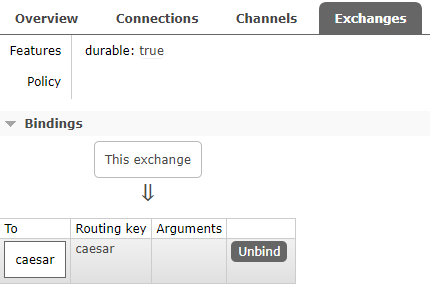

在clinet端,通过Producer对Exchange发送数据,数据自动会被消费
from kombu import Connection,Exchange
exchange=Exchange('caesar','topic',durable=True)
with Connection('amqp://guest:guest@localhost//') as conn:
# produce
chann = conn.channel()
exchange(chann).declare()
producer = conn.Producer(chann, serializer='json')
producer.publish({'name': 'caesar'}, exchange=exchange, routing_key='caesar')

分析oslo_messaging
客户端
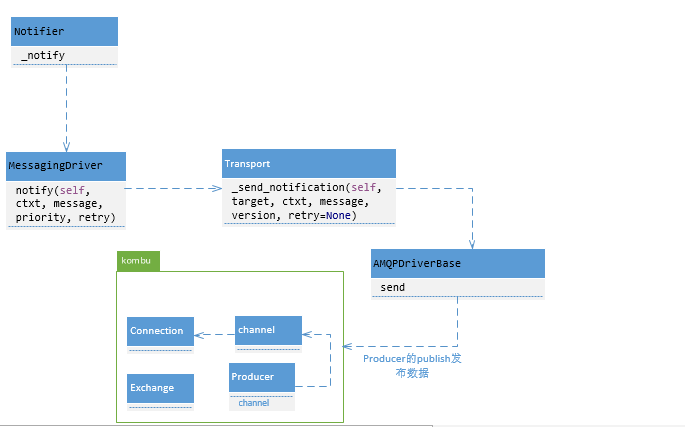
服务端
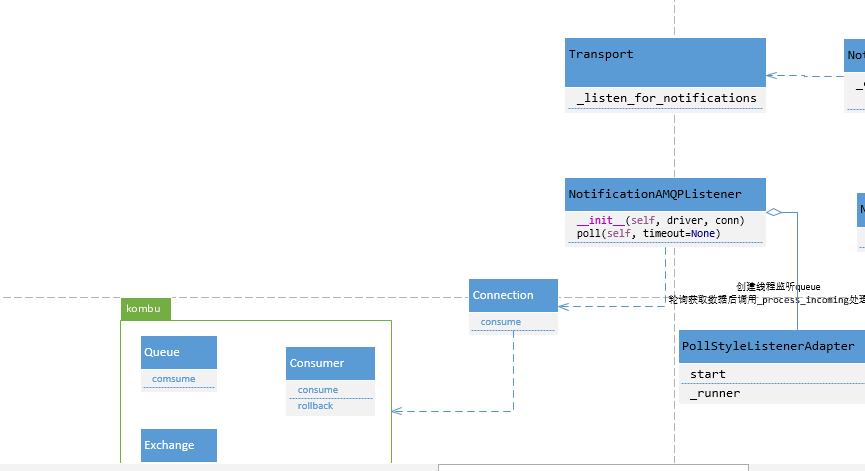
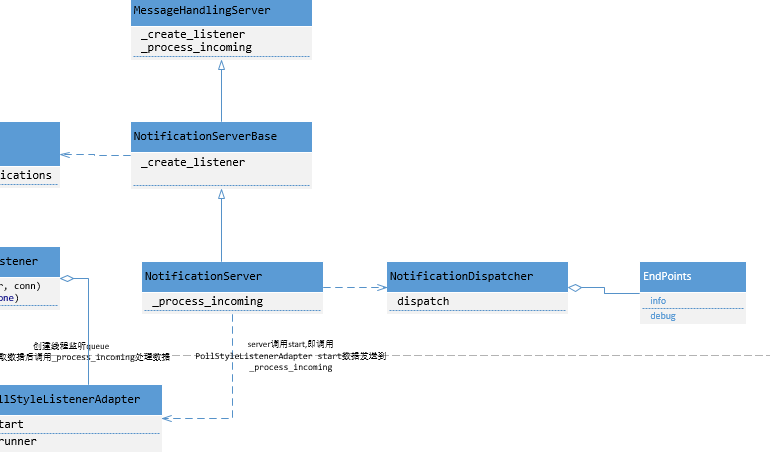
1. kombu = oslo_messaging._drivers.impl_rabbit:RabbitDriver
在ampqdriver.py的AMQPDriverBase类中使用kombu,定义send,listen,send_notification,listen_for_notification,用于消息的发送与监听。以send_notification为例,调用_send方法,在_send中又调用notify_send,创建exchange,创建默认Queue(使用routing_key,用于没有消费的情况下,如果将来使用者将consumer绑定到这个queue上,可以获取数据)并绑定exchange和channel,创建Producer,并向channel发送数据。
其中ensure_publishing 在发送失败时,进行retry次重试,直到成功为止。


在listen_for_notification中建立连接后,创建topic.priority的queue。PollStyleListenerAdapter启动一个线程对获取到的数据进行处理,此处返回此类
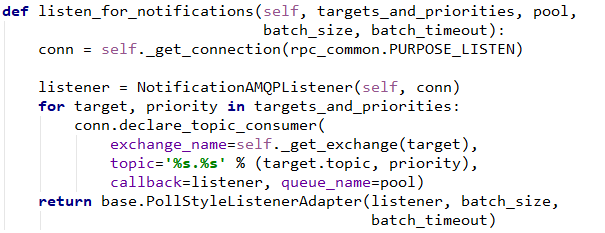
以上方法又封装在oslo_messaging的Transport中,而Target中封装topic和exchange等信息
2. messaging = oslo_messaging.notify.messaging:MessagingDriver
在MessagingDriver中调用_send_notification发送消息
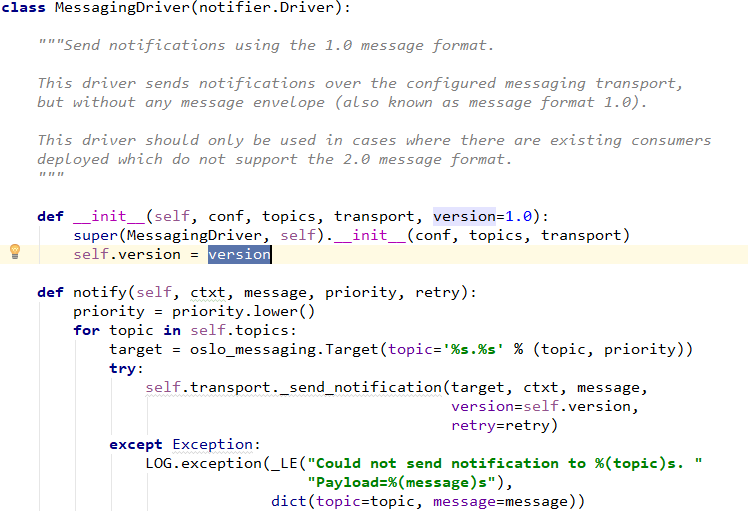
3.Notifier和server
在Notifier.py中调用messaging中的notifer发送不同级别的消息

在server.py中MessageHandingServer中继承service,ServiceBase启动一个进程服务,定义的start,stop,wait方法作用 PollStyleListenerAdapter,用于获取Queue中的数据。定义_process_incoming。在listener.py中NotificationServer继承MessageHandingServer,实现_process_incoming,将获取的数据进行分发
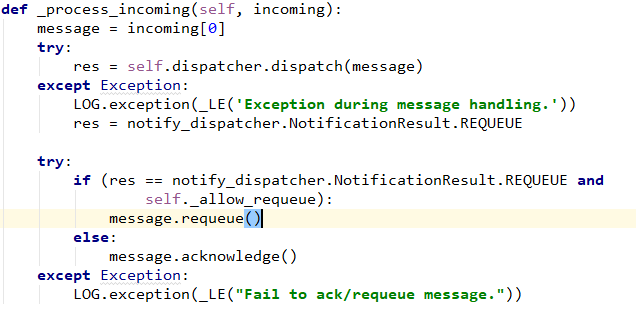
在分发的时候,根据endpoint类中的方法级别和filter_rule(endpoint为普通类),根据消息中的ctxt,publisher_id,event_type等,如果与filter_rule匹配,则将调用此endpoint中的级别方法。可参考https://www.cnblogs.com/CaesarLinsa/p/8591847.html。
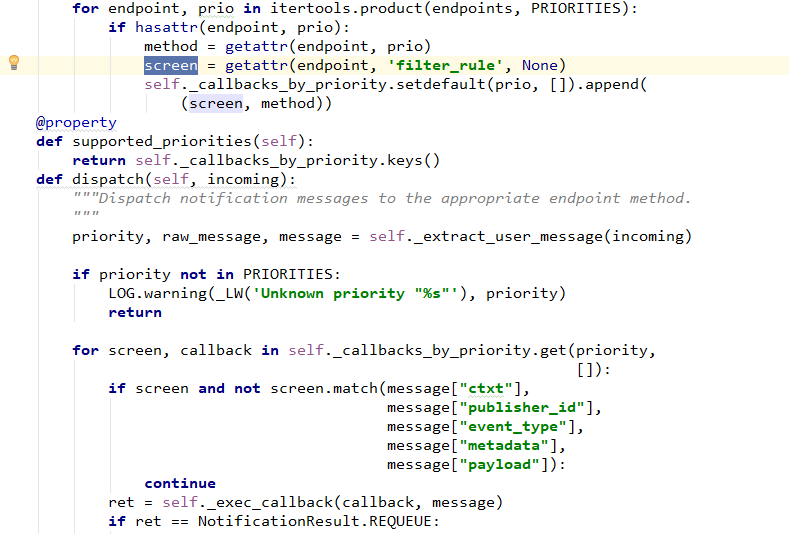
在get_notification_listener 返回数据处理server,其中存在dispatcher,用于分发到指定的endpoint的级别方法
